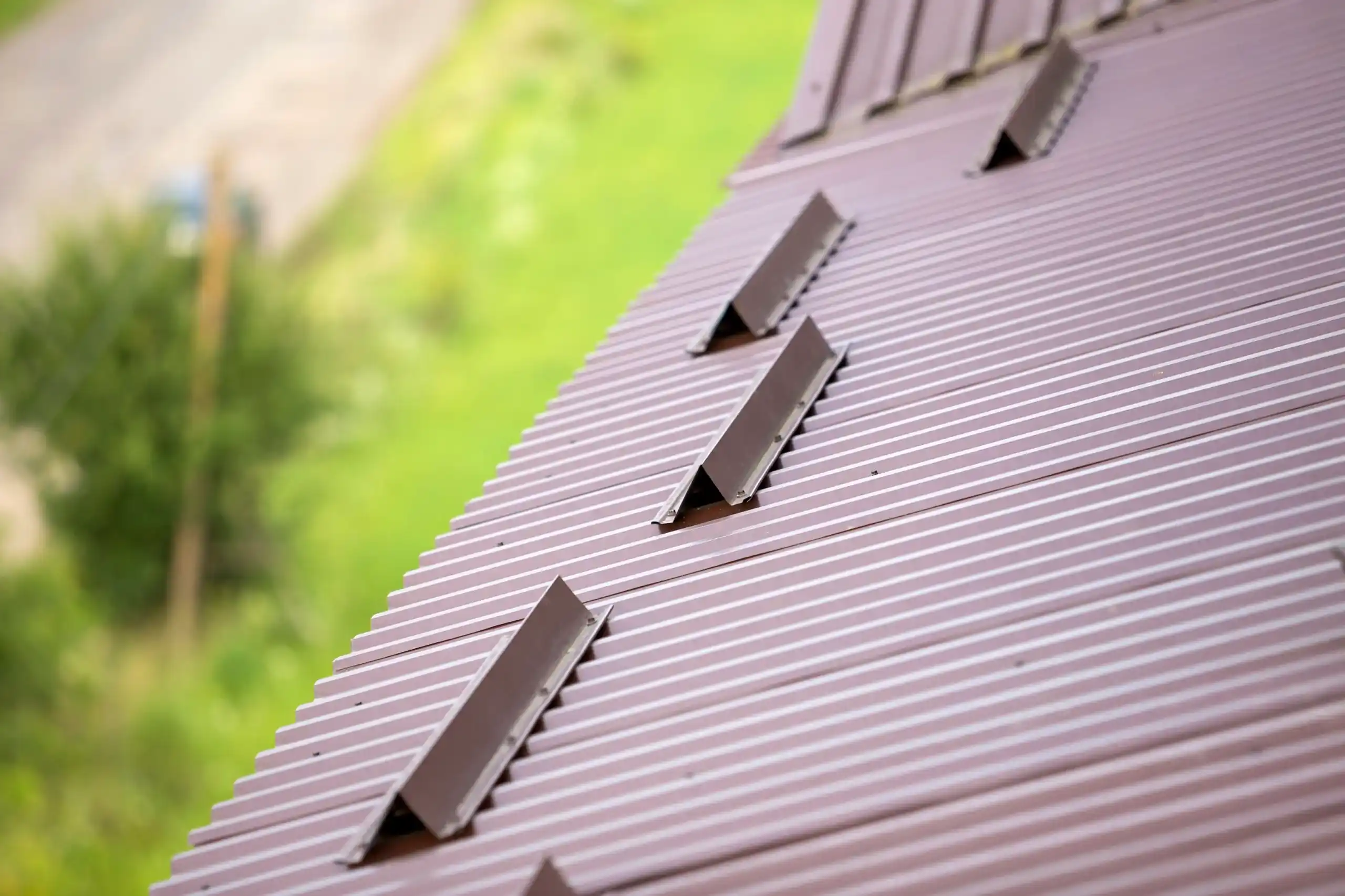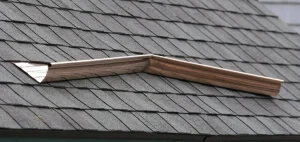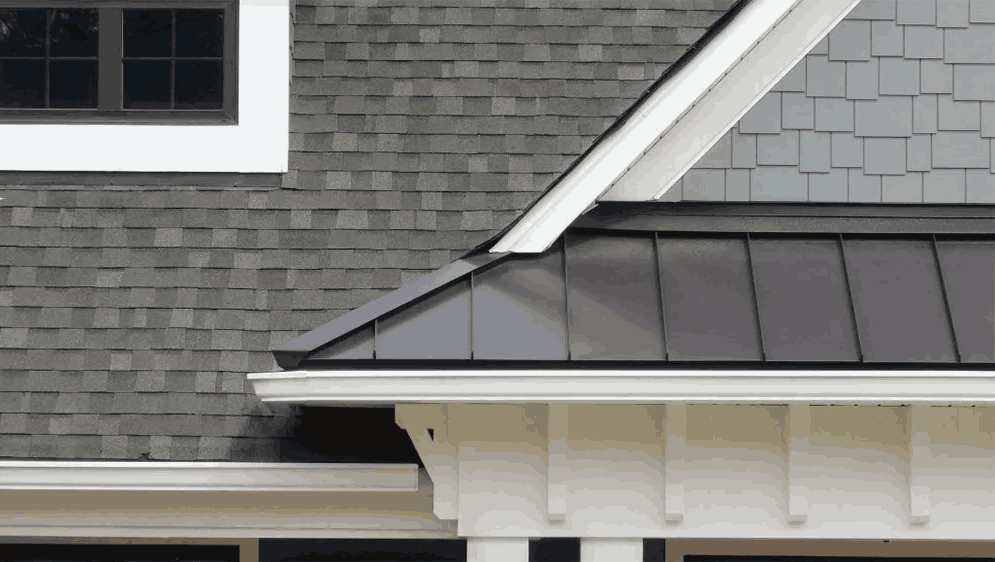
If you’ve ever stood at your front door during a rainstorm and been soaked by water pouring off your roof. Learn about rain diverters designed to solve. Simple, affordable, and effective, rain diverters play a small but essential role in managing roof runoff and protecting your home.
In this blog, we’ll explain what a rain diverter is, how it works, where it’s best used, and why it might be the perfect solution for your roofing needs.
What Is a Rain Diverter?
A rain diverter is a metal or plastic strip installed on your roof to redirect the flow of rainwater. It’s typically placed under the edge of the roofing material and slopes to either side, guiding water away from entryways, walkways, porches, or problematic roof valleys.
Unlike gutters, which collect and channel water into a downspout, a rain diverter simply changes the direction of the water’s flow so it doesn’t fall straight down in inconvenient or damaging locations.
Why Do Homeowners Use Rain Diverters?
Rain diverters are most often installed for targeted water management, especially in areas where installing a full gutter system may not be feasible or necessary.
Common Reasons to Use a Rain Diverter:
-
To keep doorways and porches dry
-
To protect walkways from pooling water
-
To reduce splashback and soil erosion
-
To prevent water damage to wooden thresholds or decking
-
As a temporary or supplementary solution in places without gutters
If you live in a region with moderate rainfall and only need to manage water in one or two spots, a rain diverter can be an efficient and low-cost solution.
How Does a Rain Diverter Work?
A rain diverter is installed underneath the shingles and laid at an angle so that it diverts rainwater off to the sides of a roof. This creates a mini “channel” that changes the direction of runoff before it hits the edge of the roof.
Most diverters are installed:
-
Horizontally, just above a doorway or window

-
At a downward angle to direct water to either side

-
Beneath a few rows of shingles for a seamless appearance

Rain diverters should always be installed under the upper course of shingles to ensure a watertight fit and prevent leaks.
Types of Roof Rain Diverters
There are a few different types of rain diverters that help directs rainwater away, and the right one depends on your roof style, and needs.
1. Metal Rain Diverters
Made of galvanized steel, aluminum, or copper, these are the most durable and commonly used diverters. They’re easy to install and blend well with most roof types.
✅Pros:
-
Long-lasting, works effectively under heavy and harsh climates.
-
Paintable to customize or match the roof
-
Ideal for asphalt, metal, or wood shake roofs
❌Cons:
-
May rust if not treated or painted
-
Require careful installation to prevent shingle damage
2. Vinyl or Plastic Rain Diverters
These are lightweight and easier to work with but less durable over time.
✅Pros:
-
Affordable
-
Easy to cut and install
-
Resistant to corrosion
❌Cons:
-
May become brittle in cold temperatures
-
Not as strong as metal alternatives
3. Roof Valley Diverters
Used in areas where two roof planes meet to form a V-shaped valley. They guide large volumes of water away from vulnerable areas.
✅Pros:
-
Ideal for heavy runoff zones
-
Helps prevent water pooling
❌Cons:
-
Requires precise installation
-
May not be visually appealing on all roof types
Where Should You Install Rain Diverters?
Rain diverters work best in areas that:
-
Are frequently soaked during rain
-
Leaks, or structural lack of gutters
-
Have entryways, windows, or walkways directly below the roof edge
Ideal Locations:
-
Over front or back doors
-
Above patios or decks
-
At roof valleys where water naturally converges
-
Along low-slope sections where water tends to pool
Rain diverters are not a full substitute for gutters, but they are a great solution for specific trouble spots.
Benefits of Installing a Rain Diverter
Rain diverters provide several key advantages for homeowners looking to manage water more efficiently.
1. Affordable Water Management
Compared to installing a full gutter system, rain diverters are inexpensive and require minimal labor.
2. Reduced Water Damage
They protect entryways, fascia boards, and landscaping from erosion, rot, and splashback.
3. Low Maintenance
Rain diverters don’t clog like gutters and require little upkeep once installed correctly.
4. DIY Friendly
Most rain diverters can be installed by a skilled DIYer with basic tools and ladder access.
Potential Drawbacks of Rain Diverters
While rain diverters are useful, they aren’t a universal fix for all drainage issues.
Consider These Limitations:
-
Not suitable for heavy rainfall areas: They can’t manage high volumes of water like gutters can.
-
May require periodic adjustment: Especially after storms or heavy winds.
-
Improper installation can cause leaks: If installed incorrectly, water may get under the shingles.
For homes with large or steep roofs, a professional drainage system with gutters and downspouts is still the best long-term solution.
Installation Tips for Best Results
Whether you hire a roofer or take the DIY route, proper installation is key to effectiveness.
Key Tips:
-
Always tuck the top edge of the diverter under the upper row of shingles
-
Ensure the diverter slopes downward at both ends
-
Use roofing nails or screws and sealant to prevent leaks
-
Consider painting the diverter to match the roof for a seamless look
-
Do not install diverters in areas where water will pool—always allow for a clear exit path
When to Consider Professional Installation
Although a rain diverter is a relatively small roofing accessory, it still involves lifting shingles and altering part of your roofing system. If you’re unsure how to install it correctly—or if your roof is steep or aging—call a professional roofer.
A licensed contractor can:
-
Assess water flow and roof pitch
-
Recommend the ideal type of diverter
-
Install it safely without compromising your shingles or warranty
Conclusion: Should You Install a Rain Diverter?
If you’re dealing with water pouring over an entryway, splashing on your porch, or eroding your landscaping, a rain diverter is a simple, effective fix. It’s not a replacement for a full gutter system, but for specific trouble spots, it offers an affordable and low-maintenance solution.
For homeowners looking to improve water flow without the hassle of full gutter installation, a rain diverter is often the perfect middle-ground.
Need Help With Rain Diverter Installation?
Whether you’re installing a new roof or looking for a quick fix to protect your entryway, a local roofing professional can help you choose and install the right rain diverter for your home. Don’t wait for water damage to happen—take control of your roof runoff today.




